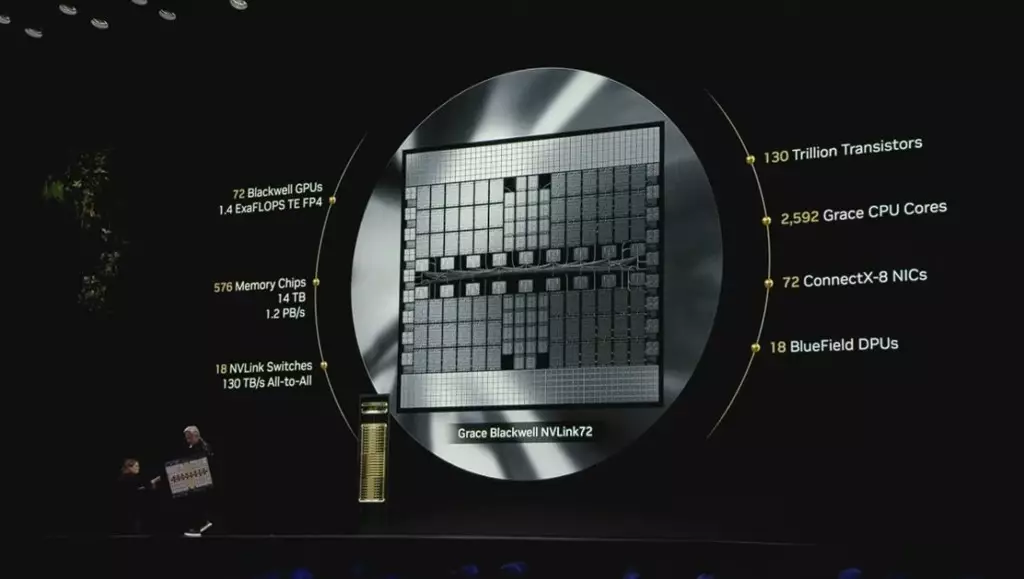In a surprising pivot, President Donald Trump recently announced a retreat from proposed tariffs on consumer electronics—a decision that has reverberated through the tech industry and the broader stock market. The U.S. Customs and Border Protection revealed on Friday that consumer electronics, heavily reliant on Chinese manufacturing, will be exempt from the intended 145% tariffs as well as a 10% global tariff. This move acknowledges the fragile state of the stock market, which has already seen a staggering 15% decline since Trump assumed office. By prioritizing the tech sector, a vital component of the U.S. economy, the administration seems to recognize that the repercussions of such tariffs could stifle innovation and growth.
Yet, the exemption raises questions about the efficacy and consistency of Trump’s trade policies. While the initial intent behind imposing tariffs was to bolster domestic manufacturing and address trade imbalances, the reality is that tariffs have tended to backfire, driving up consumer costs without necessarily reviving American industry. Analysts predict that without these tariffs, the price of essential gadgets like smartphones and laptops, which have seen price projections increase significantly under proposed tariff plans, may stabilize, but this is only part of the picture.
Balancing Act: Domestic Supply and Global Demand
The international chip market presents an intricate web of dependencies that complicate unilateral decisions about tariffs. The fact is that while the U.S. pioneered the semiconductor industry, it now only accounts for a fraction—around 14%—of global production. Reintroducing tariffs doesn’t magically restore that lost share; rather, it risks alienating critical trade partners and exacerbating existing supply chain vulnerabilities. For instance, companies like Apple—the behemoth tech firm—rely on intricate global supply chains to assemble their products efficiently and competitively. The prospect of a $1,000 iPhone ballooning to a price tag of $3,500 highlights how detrimental misguided tariffs can be to both consumers and corporations.
Experts, such as those from consulting firm PwC, have repeatedly cautioned that simply imposing tariffs will not resolve deeper, systemic issues within the supply chain. Furthermore, tariff increases on essential materials like steel and aluminum could ripple through various sectors, affecting everything from construction to consumer electronics. This symbiosis underscores the need for a nuanced approach that doesn’t just rely on punitive measures against trade partners.
Long Road Ahead: The Future of Chip Manufacturing
While the recent decision to lift tariffs offers short-term relief, it does little to address the long-term challenges facing U.S. semiconductor manufacturing. As prominent experts note, the current trajectory may take years, if not decades, to reverse the trend of offshoring chip manufacturing. Initiatives like the bipartisan U.S. Chips and Science Act demonstrate a recognition of the need for significant investment in domestic semiconductor capabilities. However, funding alone won’t suffice; the historical context reveals that creating a competitive semiconductor manufacturing sector requires nurturing skills and infrastructure over time.
Duncan Stewart, TMT Center research director at Deloitte, pointed out that even with extensive investment, achieving a mere rise from 10% to 14% in U.S.-produced semiconductors would be a noteworthy accomplishment. This indicates that the potential for rapid growth in U.S. manufacturing in the semiconductor sector will take concerted effort, collaboration, and time.
The Role of Education and Workforce Development
Another crucial factor missing from the tariff debate is the pressing need for an educated workforce to support the burgeoning tech industry. While the U.S. is home to numerous world-class institutions, countries like China are producing a higher number of engineers and STEM graduates annually. Thus, the U.S. must revamp its educational curricula to produce skilled talent capable of driving innovation in the tech sector. Efforts to improve math and science education could play an integral role in maintaining the competitive edge that American-based technology firms require.
Ultimately, tariffs may serve as a short-term patch but will do little to foster the foundational changes the industry needs. The tech sector thrives on innovation, advanced engineering, and qualified personnel—conditions that cannot be artificially created through economic deterrents like tariffs.
Lobbying and the Tech Influence
While it’s understandable for policymakers to be wary of the lobbying efforts of tech giants, the reality is that their influence is both a double-edged sword and a catalyst for economic progress. High-value jobs generated by these companies contribute to a robust economy and promote the need for more specialized education. The industry requires skilled labor, which in turn drives innovation and enhances competitiveness. The job landscape is shifting, and policymakers must recognize that a synergistic relationship between government, educators, and tech companies is essential for future growth.
Any effective path forward will need to navigate the complexities of global trade, domestic capabilities, and education reform in a deliberate and thoughtful manner. The road ahead is fraught with challenges, but by fostering a collaborative environment that prioritizes long-term growth over short-term fixes, stakeholders can create a tech industry that stands resilient against future uncertainties.

